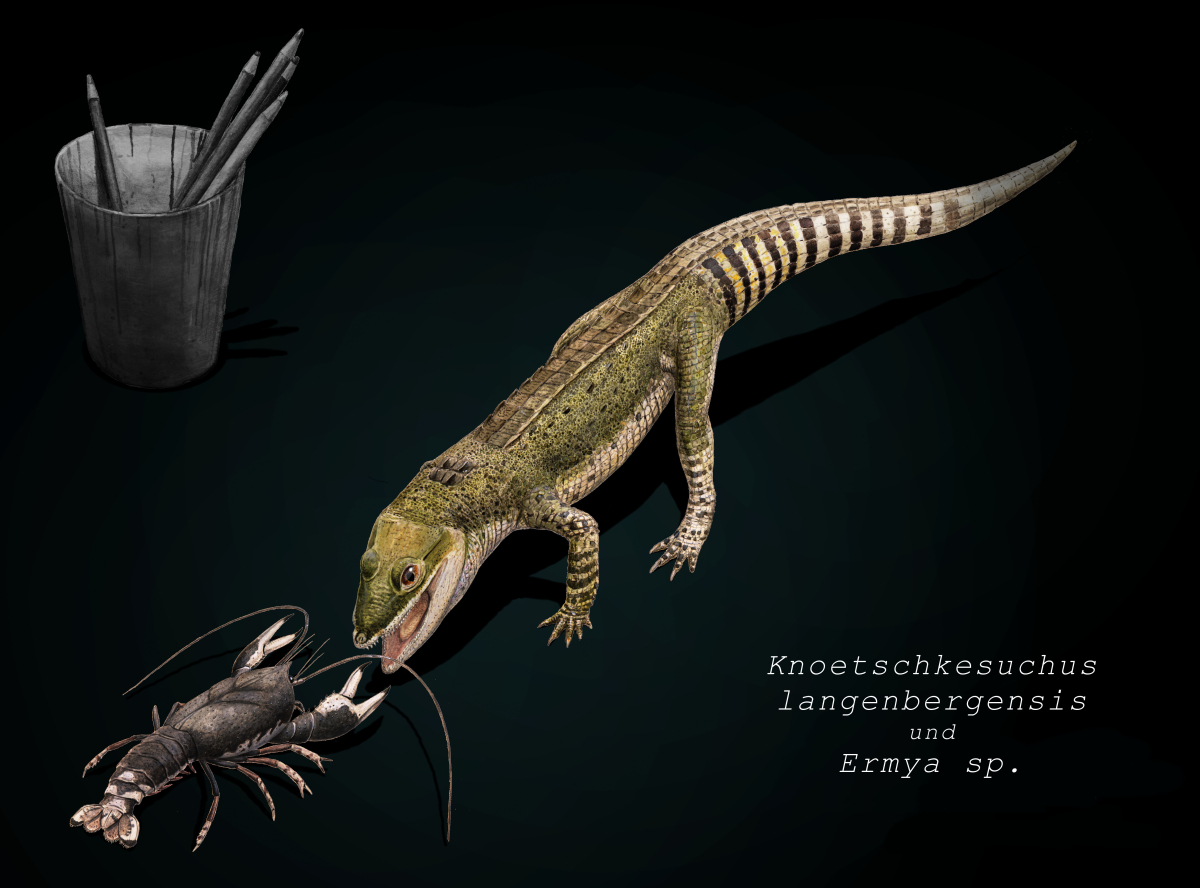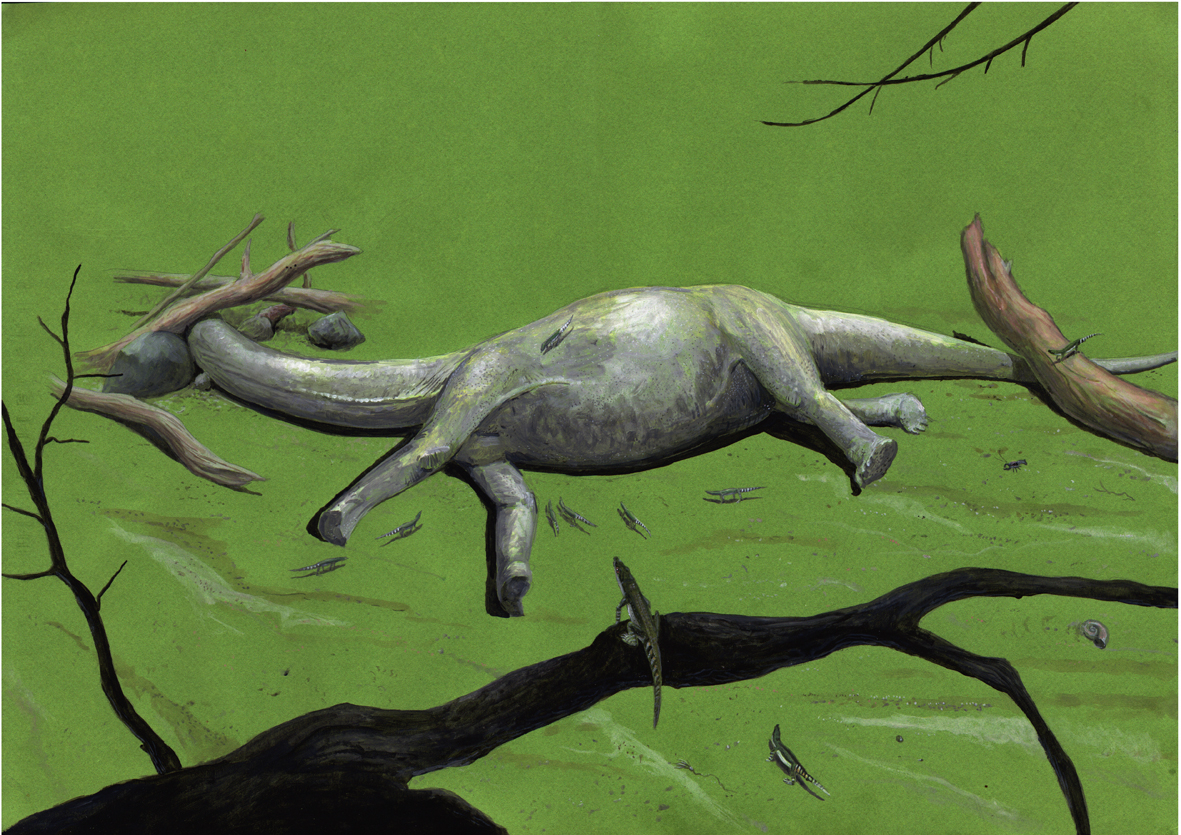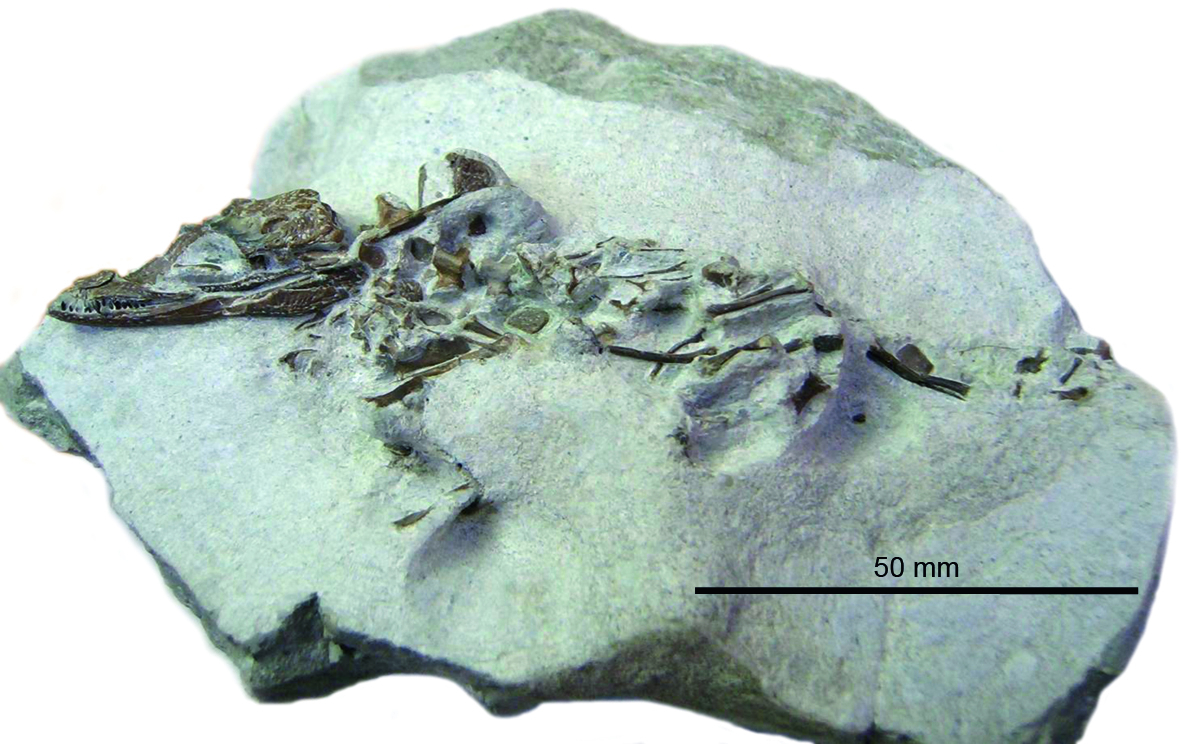A dwarf crocodile from the Harz mountains: Fossils suggest a new genus
Researchers from the Landesmuseum Hannover and the Museum für Naturkunde Berlin have described a new genus and species among the ancestors of modern crocodiles. Knoetschkesuchus lived on an island in the Jurassic sea in the Harz foothills in Germany.
Not more than 50 cm body length, short snout, large eyes: Knoetschkesuchus langenbergensis lived 154 millions of years ago in Northwestern Germany. Researchers found the fossils of the crocodile in a limestone quarry near Goslar, where a variety of marine and terrestrial animals were domiciled. The latter included for example the small sized dinosaur Europasaurus holgeri. Researchers found two well-preserved skulls and some other skeletal remains of different ontogenetic ages from Knoetschkesuchus. The fossil skulls are partly embedded in sediment and only a few centimeters long. Precisely this fact made their exact taxonomic determination (the systematic classification in, for example, Family, genre, and species) difficult. Therefore they were initially determined to belong to Theriosuchus, a genus of atoposaurid crocodiles that was widespread in the late Jurassic of Europe. The skull remains are superficially very similar to Theriosuchus.

With the help of micro-CT images, the small skull remains could now be examined to the last detail and also from the interior of the slab, allowing precise new skull reconstructions. The new combination of characters which was revealed through the reconstructions – especially with regard to teeth and bony openings in the skull – is also visible in a small crocodile from the late Jurassic of Portugal, which was described as Theriosuchus guimarotae. For that reason it was necessary to find a new genus name for both crocodiles: The authors of the new study that has been published in the scientific journal PLoS One chose the name Knoetschkesuchus. By naming this new genus of crocodiles it was demonstrated: The variety of fossil crocodiles in the Late Jurassic of Europe was larger than hitherto known. The group of Atoposauridae, to which Knoetschkesuchus belongs to, was close to the origin of modern crocodiles, which is also corroborated by this study. However, Knoetschkesuchus distinguishes itself from Theriosuchus in so far as the latter included also herbivorous or frugivorous food items whereas Knoetschkesuchus probably relied mostly on insects for its diet.

The finds of Knoetschkesuchus therefore reveal that an important factor for the evolution of atoposaurids was the diversification of tooth morphotypes and dietary preferences. Dr. Oliver Wings explains: "This quarry represents a unique insular fauna from the Late Jurassic with a diverse fauna of terrestrial and aquatic organisms. Knoetschkesuchus fits perfectly into this environment and helps us to understand better the faunal composition of small fossil islands". The study is part of the "Europasaurus-Project", which has been coordinated by the Landesmuseum Hannover since 2012 and is supported by the Volkswagen Foundation in its funding initiative "Research in Museums".
Information on the Publication
Schwarz, D., Raddatz, M. & Wings, O. 2017. Knoetschkesuchus langenbergensis gen. nov. sp. nov., a new atoposaurid crocodyliform from the Upper Jurassic Langenberg Quarry (Lower Saxony, northwestern Germany), and its relationships to Theriosuchus. PLoS One.
Background on the Funding Initiative "Research in Museums"
The funding initiative "Research in Museums" offer addresses small and medium-sized museums with different thematic scopes and is aimed at research on existing collections. Funding is only available for workshops and symposia that contribute toward strengthening the profile of museums as research institutions. The next deadline for applications will be June 15, 2017.

